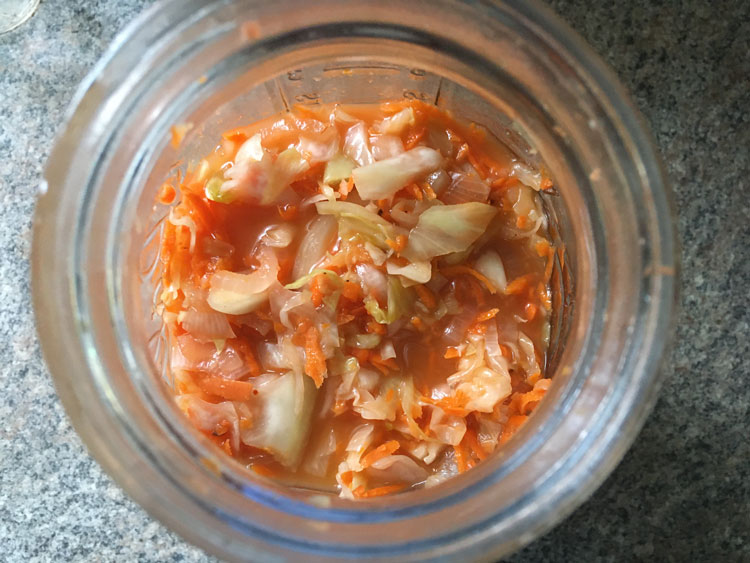
By Kate Swords, CNS
Functional Medicine Nutritionist
Our lives have been tremendously affected over the last few months by something so small, it’s invisible to the naked eye. This tiny virus has forced us to think longer and harder about where we go, who we see, and what we touch. As more viruses, bacteria and other microorganisms present themselves in our world, the more we seem to fear exposure to ALL microbes. But bacteria have been present on earth for more than 2.5 billion years. Humans and other forms of life evolved with these organisms in a symbiotic relationship, and our health and the homeostasis of our environment depends on our coexistence with them. The important thing to realize is that an over-abundance of dangerous, invasive or pathogenic bacteria is more the exception than the rule. Our kitchen counters, bathroom sinks and various parts of our own bodies including skin, gastrointestinal (GI) tract, even the crevasses between our teeth – all have microorganisms that protect us by competing with potentially dangerous microbes.
Did you know that there are more than 100 trillion bacteria in the GI tract? These “nonhuman” cells outnumber the total number of human cells in the body by 10-fold, and account for 3-4 lbs of body mass! And no, they are not those 3 stubborn pounds you can’t seem to lose. (But, healthy bacteria in the gut can be supportive of maintaining a healthy weight.) Maintaining the integrity of our gut is imperative for our digestive, immune, skin, and even brain health. The gastrointestinal microflora can, however, be modified by external factors. For that reason, it is imperative to get proper sleep, manage internal and external stressors, and support the body with nutritious food that is low in sugar and high in fiber and probiotics.
By now I am sure you have heard the term “probiotics”, but what are they and how can we get them from food? The term probiotic (from pro and biota) quite literally means “for life”. They are produced through traditional lacto-fermentation of vegetables, fruit and dairy. You might be thinking, lacto what? There are certain types of bacteria, called lactobacilli, present on these foods that are responsible for enzymatically breaking down their sugars and starches into lactic acid. The lactic acid acts as a natural preservative, inhibits the production of pathogenic bacteria, and promotes the growth of healthy flora throughout the intestine.

*Note: I recommend high quality organic vegetables for the best results
Fermented or cultured foods have been a traditional source of nourishment for people worldwide for what appears to be most of human history. Think sauerkraut, kimchi, kefir, idli, miso, preserved lemons, sour pickles – even chocolate is fermented. The process of fermenting foods has been used for centuries both as a way to preserve and store them for later consumption, but also as a method to make them more digestible and nutritious. Fermentation can help to acidify the intestinal tract, providing a less than ideal environment for pathogens and yeasts. It breaks down foods like soybeans and dairy into forms that are easier to digest, almost as a method of pre-digestion. While it can induce the breakdown of anti-nutritional and toxic compounds like phytates and agricultural pesticides, it also preserves nutrients and creates new ones. Protein, essential fatty acids, choline, vitamin K, vitamin C and various B vitamins like biotin, thiamine, riboflavin, niacin, and folate can be created or increased in certain foods through the process of fermentation. The assimilation of minerals that require acid for absorption, like zinc, iron, magnesium and calcium is also enhanced. By consuming these “alive” foods, you can improve your immune system, gut function and motility, skin health, allergies, and even mood.
Fermented, probiotic-rich foods are largely missing from the Western diet, to the detriment of our health and environment. Eating a variety of live, fermented foods provides many benefits. If you decide to incorporate them into your diet and want to start out buying them at your local store, make sure to read the labels. Many commercially available brands utilize a heated vinegar and salt brine and are then canned. These have not gone through the traditional lacto-fermentation process and therefore have not developed the beneficial bacteria and lactic acid. Preservatives are often used to keep products more shelf stable. Other food producers may utilize the traditional fermentation process but then pasteurize their products or heat them to the point in which microorganisms die, negating any benefit. The best way to ensure you get ALL the benefits of fermentation is, you guessed it, to make them yourself! Check out this recipe for a quick and easy sauerkraut!
References
Fallon, S. & Enig, M.G. (2001). Nourishing Traditions (2nd ed.). New Trends Publishing, Inc.
Gaby, A.R. (2011). Nutritional Medicine. Fritz Perlberg Publishing.
Jones D.S & Quinn, S. (Eds.). (2010). Textbook of Functional Medicine. The Institute for Functional Medicine.
Katz, S.E. (2003). Wild Fermentation. Chelsea Green Publishing Company.
Lipski, L. (2005). Digestive Wellness (3rd ed.). McGraw-Hill.
Pizzorno, J.E. & Murray, M.T. (2013). The Textbook of Natural Medicine (4th ed.). Churchill Livingstone.
Sarnat, R., Schulick, P. & Newmark, T.M. (2002). The Life Bridge: The Way to Longevity with Probiotic Nutrients. Herbal Free Press.